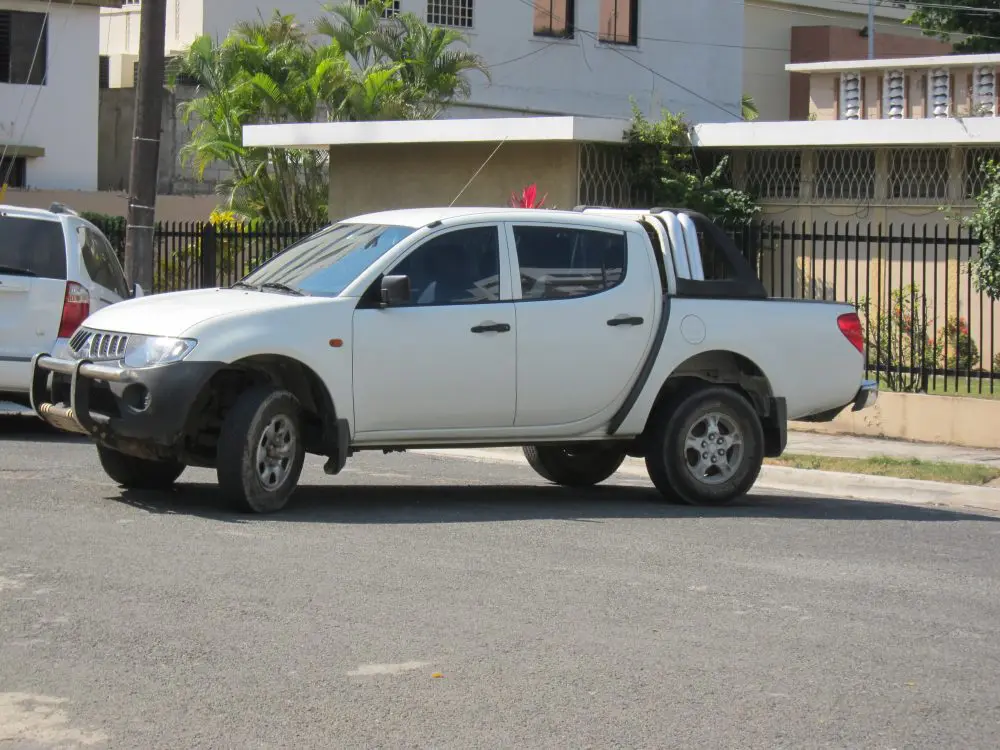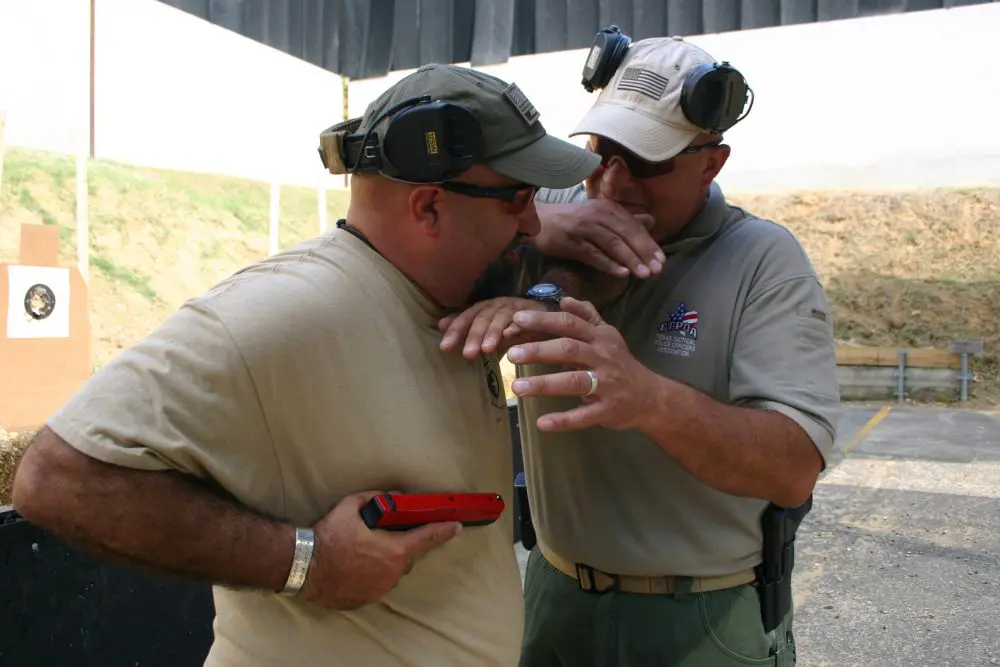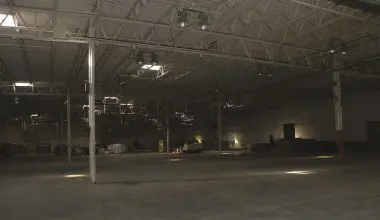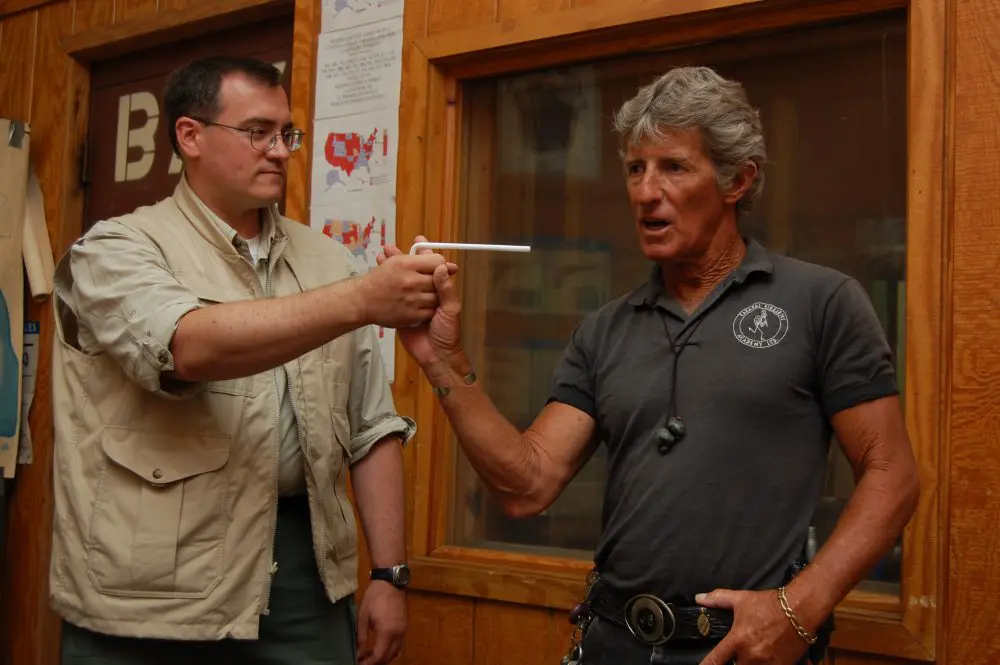
IN 1980, I captured a burglar at gunpoint in my darkened living room at 0200 hours. While most persons would consider the outcome favorable (I was not hurt or killed, and he went to jail), I was aware immediately afterward that I had prevailed through sheer guesswork, luck, and either recklessness or an assertive mindset (I am not sure which). I knew that my performance demonstrated a complete and utter lack of skill and knowledge of tactics.
Fast forward some 30 years, and my combative and shooting skills had improved, but I had gained little in the way of being able to effectively fight as an individual within a structure. This is coming from a guy who is an active member of a multi-precinct Special Response Group in one of the larger, more heavily populated counties in north Texas. I have completed a number of tactical courses that included SWAT, high-risk entry, hostage rescue, mechanical breaching and active-shooter response, but none of them covered one-man tactics.
Managing threat areas in a 360˚ environment enclosed within a residential or commercial structure comprised of rooms, halls, closets, stairwells, and various other visual impediments is a daunting task for an experienced team, much less an individual. I had never seen a playbook containing appropriate actions for such scenarios. At least, not until now.
Table of Contents
SOUTHNARC IS THE MAN …
Allow me to introduce you to Craig Douglas, a highly respected instructor also known as Southnarc. Craig combines a cool, analytical intellect and superior communication skills with an extensive background in martial arts, prior military experience, and 20 years in various law enforcement roles that ran the gamut from narcotics to SWAT.
Douglas provides his students with tested tactics that can allow a student to manipulate time, distance, cover and concealment in such a manner as to significantly narrow the window of opportunity a violent adversary has to harm others.
Does that mean individual armed movement through a structure is now safe? Absolutely not. According to Craig, engaging an armed intruder or intruders within a structure is one of the most dangerous things one can do. But the fact is, sometimes that’s exactly what one has to do in order to save himself or others.
… AND SO IS TOM GIVENS
I recently attended the Southnarc Armed Movement in Structures (AMIS) course that was conducted at the Rangemaster Academy in Memphis, Tennessee. Rangemaster owner and chief instructor Tom Givens is well known in the training community, and his school is responsible for providing over 35,000 students with skills and knowledge that are highly useful for defending themselves and their loved ones—an assertion that is fully supported by the nearly 60 defensive shootings involving Rangemaster students who walked away under their own power afterward.
Tom is an instructor’s instructor and was present throughout the course to offer insights into the thought processes and habits of the miscreants who decide to illegally enter a residential structure or commercial structure.
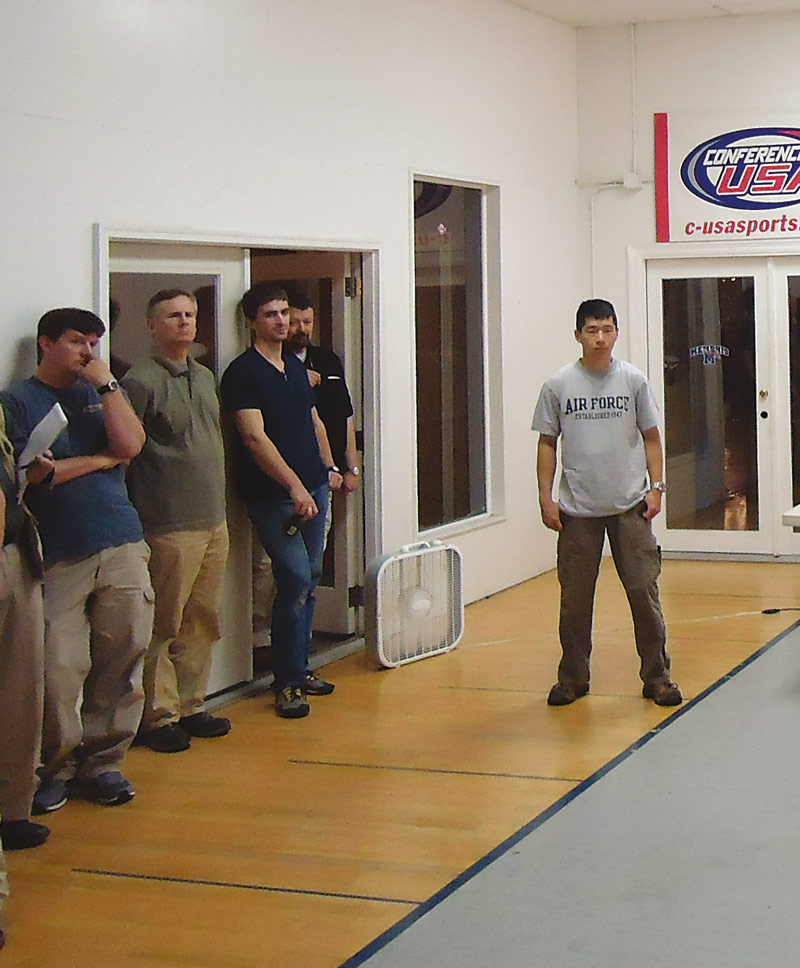 AMIS COURSE
AMIS COURSE
Class started with a well-articulated lecture that laid the foundation for the remainder of the class. Craig emphasized that the material represented a possible “best case” for dealing with one or more threats within a structure, not a “safe method.” This is not a how-to article, and I could probably write a thesis on the subject of AMIS and it would still be no substitute for taking the class. However, I will set out some of the basic AMIS principles.
- Students should view the environment not in terms of what they can see, but in terms of what they cannot see. If you can see it, you can manage it. What you can’t see is your problem. A problem can be much easier managed when you are in a position to put a gun on it.
-
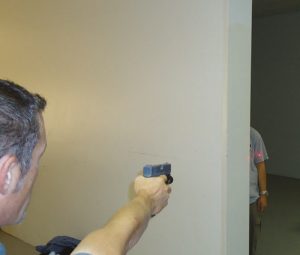
Craig Douglas demonstrates the advantage of depth. Due to his greater distance from a point of cover (in this case a wall) than his opponent, Craig was able to both identify a threat and get his muzzle on it. Look at edges, not holes. Students should define what they can’t see as planes of visual impediments, which can be horizontal, vertical, or diagonal.
- The greater distance a student has from a plane of visual impediment, the greater the student’s field of vision and the less the student has to move to get eyes and muzzle on a potential problem. Students should always seek depth when managing a threat area. During force-on-force exercises, this proved harder than it sounds.
- Students should conform their shooting platform to the plane of visual impediment afforded. In other words, provide your adversary with nothing more than an eyeball, thumb and muzzle during an engagement. This may involve some creative body positions and stances, but makes perfect sense when the objective is to see without being seen.
-

This is probably not going to go well. Bad guy lurks in a hard corner anticipating entry by a student. Once the room is cleared as much as possible from the outside, the final entry stands its best chance of success if executed with speed, aggression, and orientation of the muzzle toward the greatest area of threat. There is very little true hard cover in modern structures. Cover works only when someone else is not willing to take it away from you using effective maneuvers. Cover is not static, but a transitional point used to win a gunfight.
- Students must understand the importance of “up-pacing” and “downpacing” as necessary. In other words, if a student is unable to clear a threat area completely by slowly slicing the pie at maximum depth, then it will be necessary to move dynamically through the threat area in order to minimize both target profile and time spent out in the open.
- Students should constantly narrow their field of threat to as small an area as possible. It is very difficult to manage the environment when the threat area is more than 45˚, and nearly impossible when it approaches 180˚. The objective is to spend as little time as possible in a threat angle greater than 45˚. I learned to first read an environment, and as soon as I had cleared everything I could from outside the room or hallway, move dynamically to a new position that permitted me to narrow the area of threat to 90˚, then move again to narrow it to 45˚. It was a relief when I was able to narrow my area of threat to nothing more than an open doorway or one remaining closet, because I knew then that everything behind me had been cleared, and the chances I would take a shot in the back of the head were greatly reduced.
- Positional dominance in certain situations required aggression and willingness to seek cover behind the muzzle of a gun.

Several of the students, including me, had a team background, and we had to learn a markedly different way of searching and entering rooms while operating without support.
Aided by a Power Point presentation that codified the basic AMIS principles, Craig explained to us in careful detail the golden rules of working solo in a high-risk environment. We worked hard for the remaining 20 hours of class time to prove that we not only understood the AMIS principles, but could apply them successfully in a large office complex containing fellow students armed with Airsoft pistols. As I write this, both of my arms sport purple/ yellow bruises as a reminder of failures on my part when I was the good guy and the success of my fellow students when I played the bad guy.
LOW-LIGHT SESSION
The AMIS course contains a very useful low-light session. Craig first explained the proper use of the handheld light (a strobe feature is very useful for masking your position while searching) and weaponmounted light (when entering a room dynamically, it diminishes our tendency to be backlit and allows us to get two hands on the gun for greater accuracy and control).
Douglas stressed that light draws vision and bullets, all the more reason to keep the light used for searching well away from the head and torso. This was driven home when a student who employed the neck index method took an Airsoft hit to the neck. The opposing shooter took advantage of the neck index method to index his front sight on the student’s neck. Lesson learned.
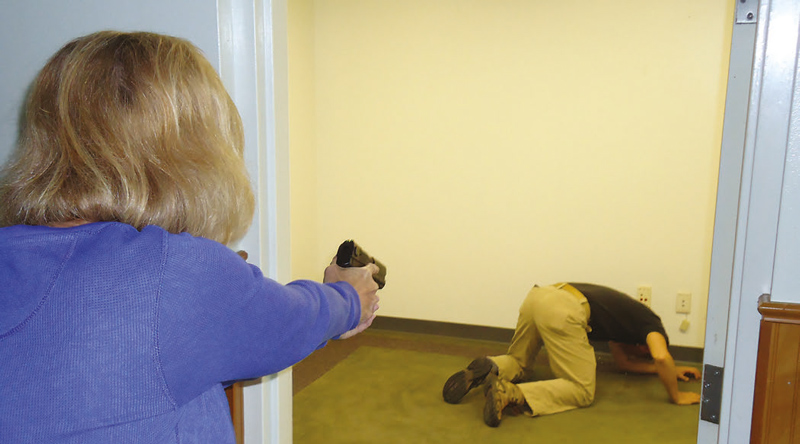
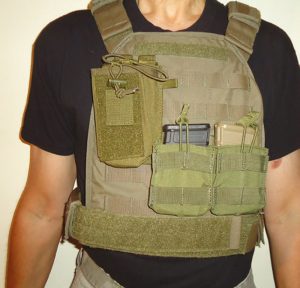
The practical exercises were conducted in a large vacant commercial building replete with a variety of disparately shaped interior offices and a large open warehouse containing half a dozen storage closets. On our initial walk-through, I was overwhelmed by the challenges.
After splitting the class into four groups, Douglas divided the building into four quadrants, with each quadrant appearing to have been designed by the devil’s architect. For example, upon entering quadrant two, the student was greeted with a large room containing five open, closed, or partially closed doors, each of which led either into a smaller office that contained a small closet, three large storage closets that had to be fully entered in order to clear, or a hallway containing a large storage closet and utility room.
The good news? By the morning of TD2, I was able to quickly move into a position that allowed me to narrow my threat area from 180˚ to 90˚ to 45˚, and then systematically clear the route one threat area at a time.
DIFFERENT TYPES OF THREATS
The AMIS course did not ignore the human element of dealing with threats. We were presented with useful techniques for not only dealing with a violent criminal actor, but also with persons who had mistakenly entered the training area and trespassed, albeit without criminal intent.
Examples of this were the drunken teenaged boy who’d gotten a text from a hottie who invited him over after midnight when her parents were sleeping— but sent the wrong address, and persons who were mentally handicapped or under the influence of drugs or alcohol and mistakenly entered a residence in which they did not live.
The course ended with a final training exercise (FTX) in which each student was tasked with dealing with a scenario that involved multiple bad guys who had made contact with one of our loved ones. The intent of the FTX was apparent.
Students either demonstrated that they had internalized the AMIS principles and were capable of implementing them under stress, or learned the hard way why adhering to AMIS principles is important. I don’t want to give away the course finale, but suffice it to say, students who quickly reduced their threat areas to less than 45˚ did not end up getting shot in the back.
Does it mean that students who were unsuccessful left ill-prepared to deal with like situations in the future? Not at all. As science-fiction author Orson Scott Card wrote, “The essence of training is to allow error without consequence.”
In closing, I recommend this course to anyone of any skill level with any amount of experience. Trust me, you will never look at the world the same way again.


